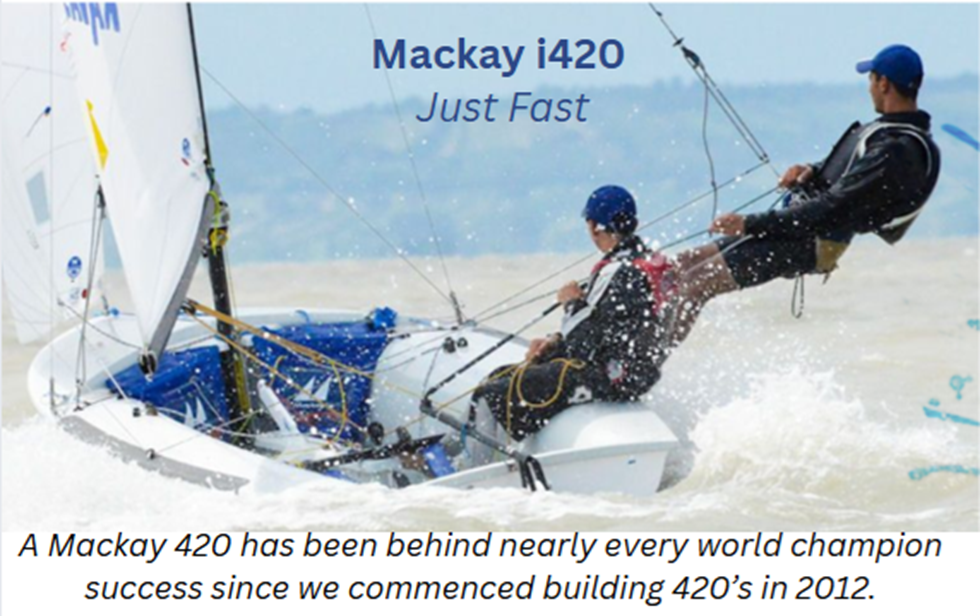In 1994, car phones came in a bag, the Saved By The Bell TV movie was released, and Sail America was gearing up for an America’s Cup Defense. Also in 1994, two friends launched two boats and started RS Sailing. Over the next 20 years, RS Sailing would go on to become a distinctly unique boat building company, come to prominence in European markets and gain international accord. Fast-forward to 2015 and their plan to introduce North Americans to a new world of sailing.
The first launch by RS was of two boats simultaneously, the RS400 and RS600. The RS600 was a singlehanded trapeze rocket ship, similar to a Musto Skiff or Contender Skiff, it was an incredibly quick, light boat for its class. The RS400 was a doublehanded asymmetrical boat with an optimum crew weight of 400lbs, similar in essence to the 5o5 but without a trapeze. While different in essence, both boats shared a common foundation in developmental classes.
Riki Hooker, RS Sailing’s VP of North American Sales, on the 400/600, “both boats were developed from UK development classes. We tried to take the best bits (of each class) and make them more simple and accessible.”
Wildly successful, their line has gone from two models to 15 with four ISAF classes and numerous awards along the way, including the RS Aero 2015 Sailing World Best One-Design. This no new territory for RS, with the RS Cat-16 selected to SAIL Magazine’s Best Boats 2014 and the RS Venture as the 2012 Sailing World Best Recreational Dinghy.
When asked about how they have achieved such success, Hooker emphasized RS Sailing’s commitment to the consumer. “From the outset, every RS boat has been designed by a sailor for someone who genuinely wants to go use it. It has not been designed for a cost or to a specific market; it was designed by passionate sailors for passionate sailors. We want people to sail our boats and be excited to sail our boats.”

Additionally, the ability to completely support each class that they offer in each region helps to foster strong classes and happy sailors. “We’re sailors, we understand sailors…(we have) a true understanding of what a sailor needs. We are very proud of what we build and we want to put out the best product we can. We understand the journey each customer has gone to in earning the money that they are coming out and spending on our boats.”
Despite all this success in European markets, the transition to North America has not been a walk in the park. “Trying to build classes is like herding cats. (The) difference between Europe and US, is that in Europe there is less emphasis on the fleet, and in the US, everyone cares about the fleet. We try to foster fleets and build racing,” admitted Hooker. In Europe, consumers are excited about the product and want to go sailing. In the US, consumers are excited about the product and want to go sailing, with a group. “We are trying to sell boats in the North American market without replacing existing fleets.”
The approach RS has taken in the US is simple in theory. Foster recreational sailing with hopes that it will encourage sailors to get into racing. The first boat in the RS line with full racing support here in the US is the RS Feva, a doublehanded boat with fully battened main, jib, and gennaker. An alternative option in between Optis and 420s, Hooker hopes that the Feva could serve as an additional trainer for the 29er and 49er classes, a transition he expects to happen over the next few years.
In addition to the Feva, RS Sailing has launched the RS Aero, winner of the 2015 Sailing World Best One-Design award. What makes the RS Aero so unique is its simplicity and appeal across the majority of sailing abilities, ages and body types. With three rig options, the Aero has gotten rave reviews across the board. In fact, 50-60 hulls sold before anyone had even seen the boat in the US.
Weighing in at 78lbs and 13’ long and a price tag around $8,000, the Aero is comparable to the venerable Laser. Easily car topped, it puts sailing at the fingertips of just about anyone. This ability to cross nearly every category of sailors gets right back to the core ideas of RS Sailing. “As sailors we have an obligation to show kids and new sailors that our sport is cool and new. We (RS) have a responsibility to create sailing. Dinghy sailing is often the first taste of sailing that people have,” said Hooker, “That’s what creates tomorrows yacht owners.”
Change is difficult for everyone and sailors are no exception to the rule. Hooker stresses, “The key point for us to get across is that this is not new, this is something that is already highly successful around the world and NA is the last great bastion in the world of sailboat racing to catch up in this process.” A stellar track record and a fistful of awards should be more than enough to convince North American sailors to check out what RS brings to the table. They are unique in their ability to provide for the consumer what they need and identify with them, all stemming from their roots as sailors.



Leave a Reply